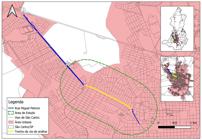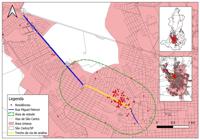Abstract
Transport systems are designed to improve mobility conditions. Nonetheless, they can also have negative impacts on displacements, such as the barrier effect. The aim of this study is to evaluate whether or not an urban street acts as a barrier to walking trips and to identify variables that change the perception of pedestrians about this effect. The road studied, located in a medium-sized city (São Carlos, SP), has intense motorized traffic. A questionnaire was designed to register personal characteristics (age, income, etc.) as well as mobility patterns (difficulties in walking, perceptions about traffic, etc.). Data from 103 respondents were examined using the Chi-squared test of independence to look for evidence of associations between the difficulties faced by respondents when walking and their individual characteristics and perceptions of community severance. In the case of perception of the barrier effect due to traffic speed and traffic volume, the results showed evidence of an association between stretches that require excessive physical effort, very wide streets and noise or air pollution. Thus, the study indicates that the street analysed constitutes, in some aspects, a barrier to walking trips.
Keywords:
Barrier effect; Community severance; Pedestrians; Transport; Infrastruture; Non-motorised mode

 Thumbnail
Thumbnail
 Thumbnail
Thumbnail
 Thumbnail
Thumbnail
 Thumbnail
Thumbnail
 Thumbnail
Thumbnail





 Raramente
Raramente
 Nunca
Nunca  Geralmente
Geralmente
 Às vezes
Às vezes 
 Sempre
Sempre



